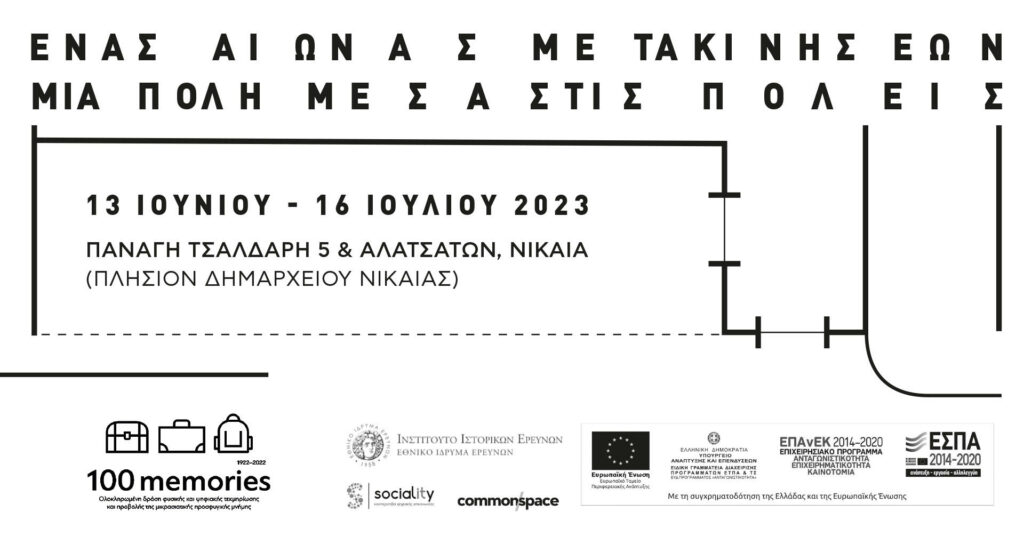A century of movement
The cities within the city
The city of Nikaia was founded on June 18, 1923. It was built for the refugees who were arriving after the defeat of the Greek army in the Greco-Turkish war. In July 1923, the two sides signed the Lausanne Treaty and agreed to a mandatory population exchange. The city of Nea Ionia in Volos was also built during that time, while Ano Poli in Thessaloniki and Nea Chora in Chania were being transformed from sparsely populated Muslim neighbourhoods to dense refugee slums. These four cities are by no means unique, but resemble many other cities which underwent similar transformations.
Which histories emerge when we examine this century through the prism of these cities? What can we discover if we look at these cities, not through the history of their grand monuments or their iconic landmarks, but through the perspective of the smaller, humbler scale of urban space? What stories can we learn from a cobbler shop in Volos, a pier in Chania, a coffee shop in Nikaia, a refugee house built against the walls of Thessaloniki?
If we use the period 1922-1924 as our starting point and focus on these four neighbourhoods, the 20th century unfolds as a continuum of arrivals and departures: the arrival of the Christians and departure of the Muslims during the population exchange, the displacement of the Jews, internal migration from the islands or the mainland to the cities, migration from Greece to Germany, Belgium, and Australia, later migration to Greece from the Balkans and Eastern Europe, and now migration from the Global South.
The subjects of this history are people in constant motion who will probably never meet, but often live in the same houses, walk the same streets, do the same jobs, have similar life stories, dreams and concerns. If we look at all these migration histories individually, each belongs to a different context and reflects a different time period. But if we view them from the perspective of urban space, these histories manifest as a continuum of multiple movements and transformations; a continuum that is hardly ever perceived as such even when we are ourselves a small part of it.
So, let’s think of our cities as spaces which are constantly shaped through the journeys, the histories and the experiences of their residents, through encounters and conflicts, welcomes and farewells which leave traces in the urban space, some visible, some less so. By unraveling, but also entwining these threads of movement, resettlement, labour and everyday life, we weave the biography of a city made of many other cities.
#100memories | #Acitywithincities

Organised by the Institute of Historical Research/National Research Foundation in the framework of the research project: “100memories: integrated action of physical and digital documentation and promotion of the Asia Minor refugee memory” / Information at email [email protected] and phone 2107273582.
The research project is implemented as part of the RTDI State Aid Action Research – Create – Innovate, co-funded by the European Union and the Hellenic Republic through the Operational Programme Competitiveness – Entrepreneurship – Innovation (EPAnEK) (official project identification code: Τ2ΕΔΚ-04827)
